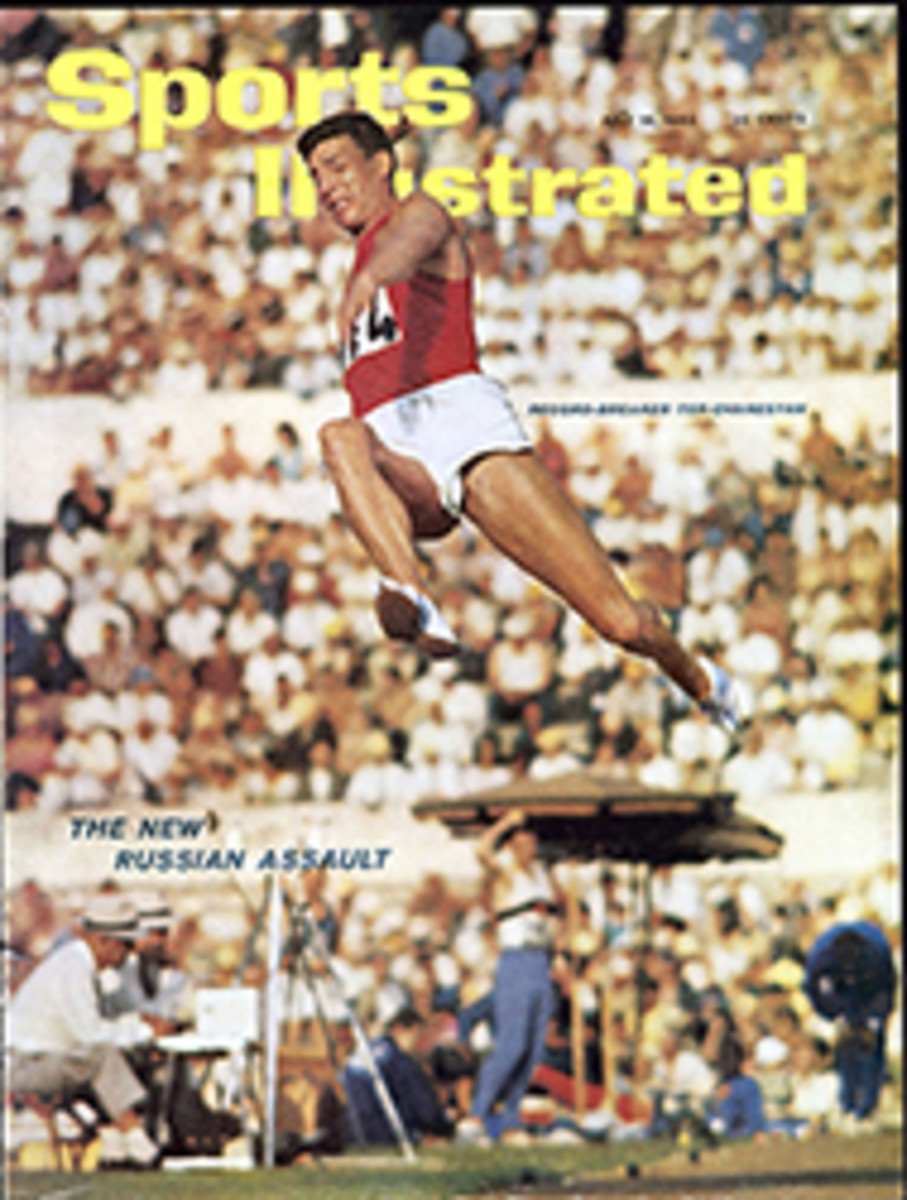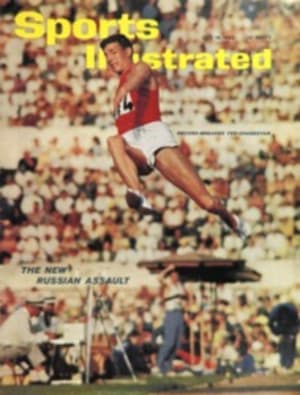
A scattering of seeds
At first glance it might seem that this was the normalest rather than the nuttiest tournament Wimbledon had seen in years. The man who had been planning to win all along, the man who was seeded No. 1, did in fact win, and won easily. In the final match red-haired Rod Laver, now three up on his way to the first Grand Slam in the men's division (Australian, French, English and American championships) since Don Budge's in 1938, gave his upstart Aussie teammate Marty Mulligan a brisk, effortless lesson and walked away with the prize in straight sets, 6-2, 6-2, 6-1
But Laver's victory was perhaps the only natural phenomenon in the entire freakish tournament. Margaret Smith, the No. 1 women's seed and Australia's second Grand Slam candidate (the only woman to make one was Maureen Connolly in 1953), was tossed out by America's unseeded Billie Jean Moffitt in her very first match. (Although she has been Australia's national champion for three years, Margaret was not allowed to practice with any other Aussies because she is officially ostracized at home for sassing her association.)
Following Smith, other seeds In the tournament drifted away like milkweed on a summer breeze. America's sturdy Chuck McKinley, last year's runner-up and No 5 on this year's list, bowed in the second round to an unknown English schoolteacher named Michael Harm. Fifteen other American men followed him to oblivion in short order, leaving no representative of the U S. in the quarter-finals for the first time within memory. The top foreigners did little better Italy's Nicola Pietrangeli was cut down by England's Alan Mills in an early round; India's Ramanathan Krishnan, seeded No. 4 but hobbled by a wrenched ankle, defaulted to Australia's Dr. John Fraser (Neale's kid brother) in their first set. Another temporary cripple, No. 2 seed Roy Emerson, retired to Marty Mulligan because of a sore toe. New heroes, like Florida's rangy Frank Froeh-ling, the only American to last three rounds, and Mexico's darting Rafael Osuna, who delighted the crowd with his fantastic agility, appeared briefly in place of the old, then faded as fast.
Revelations
Fickle fortune was just as apparent on the distaff side. In mid-tournament, for instance, there came the incredible revelation that England's tall, blonde Christine Truman, who has been ranked among the world's top 10 women for the past four years, is almost totally blind in one eye and has been since birth. This closely guarded secret, suddenly revealed by her mother, explained Christine's third-round loss to Australia's young Lesley Turner, but it threw her 1958 Wightman Cup defeat of Althea Gibson and her near victory at Wimbledon last year into a new and remarkable perspective
Another startling Wimbledon revelation was the reappearance, after a year's absence due to hepatitis, of the former stars, friends and rivals: Darlene Hard and Maria Bueno, seeded respectively No. 2 and No. 3. Darlene had sacrificed her blonde hair to a bottle of brunette dye and with it, apparently, her game. She went out in the quarter-finals to an unseeded Czechoslovakian worker who looked for all the world like the flag bearer in a Communist poster and who turned out to be the heroine of the British tournament. After dismissing Darlene with an impassable kind of sturdy, Slavic tennis, the Czech girl, kindly, square-faced Vera Sukova, who is 10 years older than her husband and still beats him on the courts, went on to demolish Maria.
Still looking tense and drawn from her illness, Bueno was anything but her old self. What admiration the former champion earned at Wimbledon this year was less for tennis than for a rainbow array of panties in hues that ranged from red through green to purple and finally, in her match with Sukova, to a fluorescent pink that had the crowd giggling and guffawing every time she stooped over. The more the crowd laughed and the more returns the stolid Sukova banged back over the net, the angrier Maria got. The Czech beat her in straight sets. Maria stalked off the court with a muttered "Just one of those things" and Sukova went back to her hotel to wash out her own (white) panties and the single pair of socks she wore (for luck) every day of the tournament.
One by one, as relentlessly as a commissar cleaning house on orders from Moscow, Vera, who took up tennis after breaking an arm in basketball, liquidated her adversaries, Australia's No. 2-ranked Jan Lehane, defending Wimbledon champion Angela Mortimer, Hard and Bueno, until she reached the finals. There, in the biggest anticlimax of the ancient tournament's most surprisingly prosperous season (300,000 fans in 13 days), she was defeated by pretty, blonde Karen Hantze Susman, the 19-year-old American bride whose tennis up to now has consisted of more promise than performance. The anticlimax lay in the fact that Sukova had twisted her ankle on a hotel carpet and found it hard to move around, giving Karen a win that was almost by default. In a tournament full of freakishness this was the unkindest cut of all, both to the victor, who deserved competition, and the loser, who deserved a chance.

